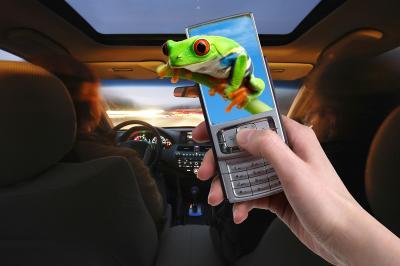Halting page loading and postage stamp sized-videos jiggling all over the screen – those days are gone for good thanks to Smartphones, flat rates and fast data links. Last year, 100 million videos were seen on YouTube with cell phones all over the world.
A survey of the high-tech association BITKOM found that 10 million people surf the Internet with their cell phones in Germany. And there's another hype that is unbroken: 3-D films. Researchers at the Fraunhofer Institute for Telecommunications, Heinrich-Hertz-Institut, HHI in Berlin, Germany, have been able to put both of them together so you can experience mobile Internet in three dimensions.
The researchers have come up with a special compression technique for films in especially good high-resolution HD quality. It computes the films down to low data rates while maintaining quality: H.264/AVC. What the H.246/AVC video format is to high-definition films, the Multiview Video Coding (MVC) is to 3-D films. Thomas Schierl is a scientist at the HHI, and he explained that "MVC is used to pack together the two images needed for the stereoscopic 3-D effect to measurably reduce the film's bit rate," and this technique can be used to reduce the size of 3-D films as much as 40 percent.

Researchers at Fraunhofer have combined the new mobile radio standard LTE-Advanced with a video coding technique. This puts 3-D films on your cell phone.
(Photo Credit: Fraunhofer HHI)
That means that you can quickly receive excellent quality 3-D films in connection with the new 3G-LTE mobile radio standard. Key is the radio resource management integrated into the LTE system that allows flexible data transmission while including various quality of service classes. Thomas Wirth, another scientist at the HHI, explains further: "The 2-D and 3-D bit streams divided up by MVC can be prioritized for each user at the air interface to support different services, thus opening up a completely new field for business models." Premium services for instance, where only the paying user can watch the 3-D version of the film. Also a 3-D quality guarantee, even in unfavorable reception conditions like in a driving car, is possible. That means that kids can still watch Ice Age in 3-D without interruption in the back seat of the car.
Source: Fraunhofer-Gesellschaft